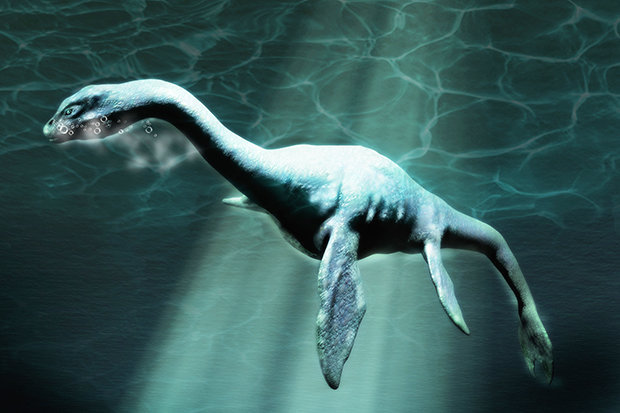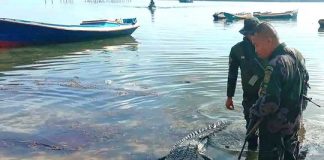
Researchers in Argentina have found the remains of a giant carnivorous marine reptile, or plesiosaur, that lived 150 million years ago in Antarctica.
The creature is a plesiosaur — a four-finned sea animal with a humungous body and a long neck — that looks a lot like the mythical Loch Ness Monster.
It took scientists two hours by helicopter from the Marambio Base in Antarctica to travel to the very edge of the frozen continent.
What is so shocking about the discovery is that it proves there was life in Antarctica many tens of millions of years before previously thought.
Here they found the skeleton of the plesiosaur, measuring around 12 metres (39ft).
José Patricio O’Gormon — one of the chief researchers behind the discovery, said in a statement how amazing the find was.
“This record of plesiosaurus is 80 million years older than what was known for Antartica,” he said.
“It was the first paleontological campaign that we carried out in this outcrop.”
He compared the place where the plesiosaur was found to “a frozen sea of 150 million years in an excellent state of conservation”.
This comes just weeks after an ancient living shark was found near Greenland, believed to be 512 years old.
Experts were shocked to find the deep-sea monster’s body was able to survive the extreme conditions in Antarctica.
“The discovery is pretty extraordinary, because the rock types at the site weren’t thought conducive to the preservation of bones, like the vertebrae of this marine reptile,” said Soledad Cavalli, palaeontologist at Argentina’s National Scientific and Technical Research Council.
“At this site, you can find a great diversity of fish, ammonites… but we did not expect to find such an ancient plesiosaur.”
Cavalli said that the body was incredibly well-preserved because its grave at the bottom of the sea had so little oxygen for other creatures to survive.
This meant that it could survive being damaged by other marine life, and also that the body didn’t rot.
Plesiosaurs are not technically classed as dinosaurs, but they lived on Earth at the same time for millions of years, before both were wiped out by a massive asteroid around 66 million years ago.
This find could raise hopes of a cloning breakthrough similar to Jurassic Park — where dinosaurs were brought back to life through a mosquito that had been preserved in amber.
Last month a 50,000-year-old frozen lion cub was discovered in pristine condition in the Russian province of Siberia.
This year has been a bumper year for sightings of the Loch Ness Monster, known affectionately as “Nessie”.
There have been nine “sightings” of the creature this year.













